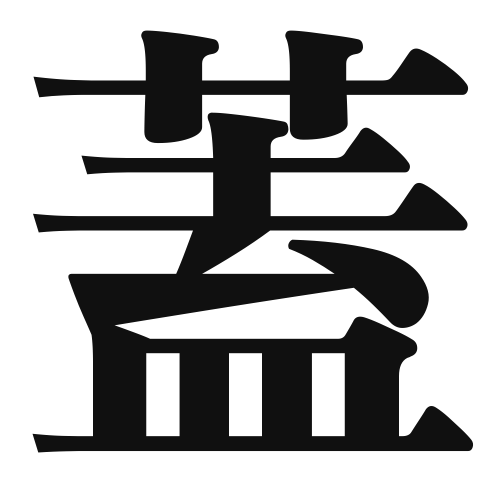1. Overview of Meaning
The kanji “蓋” (pronounced “gai” or “futatsu”) primarily means “lid” or “cover.” It refers to an object that serves to cover or enclose something, such as a pot or a container.
2. Formation and Radical
Formation of the Kanji: The kanji “蓋” is a compound character, which means it is formed by combining different elements. It is classified as a phonetic-ideographic character, where the left part (艹) indicates a relation to plants, and the right part (蓋) suggests the concept of covering.
Radical: The radical of “蓋” is 艹 (grass), which often relates to plants or vegetation in kanji.
3. Examples of Usage
Common Words and Phrases: Some common words that include “蓋” are:
- 蓋 (がい, gai) – lid
- 蓋をする (がいをする, gai o suru) – to cover
Example Sentences in Daily Conversation:
- この鍋には蓋がありますか? (Kono nabe ni wa gai ga arimasu ka?) – Is there a lid for this pot?
- 雨が降ってきたので、蓋をしてください。 (Ame ga futte kita node, gai o shite kudasai.) – Please put the lid on because it’s starting to rain.
4. Synonyms and Antonyms
Similar Kanji: A similar kanji is “覆” (ふく, fuku), which means “to cover” or “to conceal.” The difference lies in the context; “蓋” refers specifically to a physical lid, while “覆” can refer to covering in a broader sense.
Antonyms: An antonym for “蓋” could be “開” (あける, akeru), which means “to open.” This represents the action of removing a cover or lid.
5. Cultural and Historical Background
Relation to Japanese Culture: In Japanese culture, the concept of covering is significant, especially in traditional cooking and serving practices. Lids are often used in various dishes to retain heat and flavor.
Proverbs and Idioms: One common idiom is “蓋を開ける” (gai o akeru), which means “to reveal the truth” or “to uncover something.” This reflects the idea of discovering what is hidden beneath a cover.
